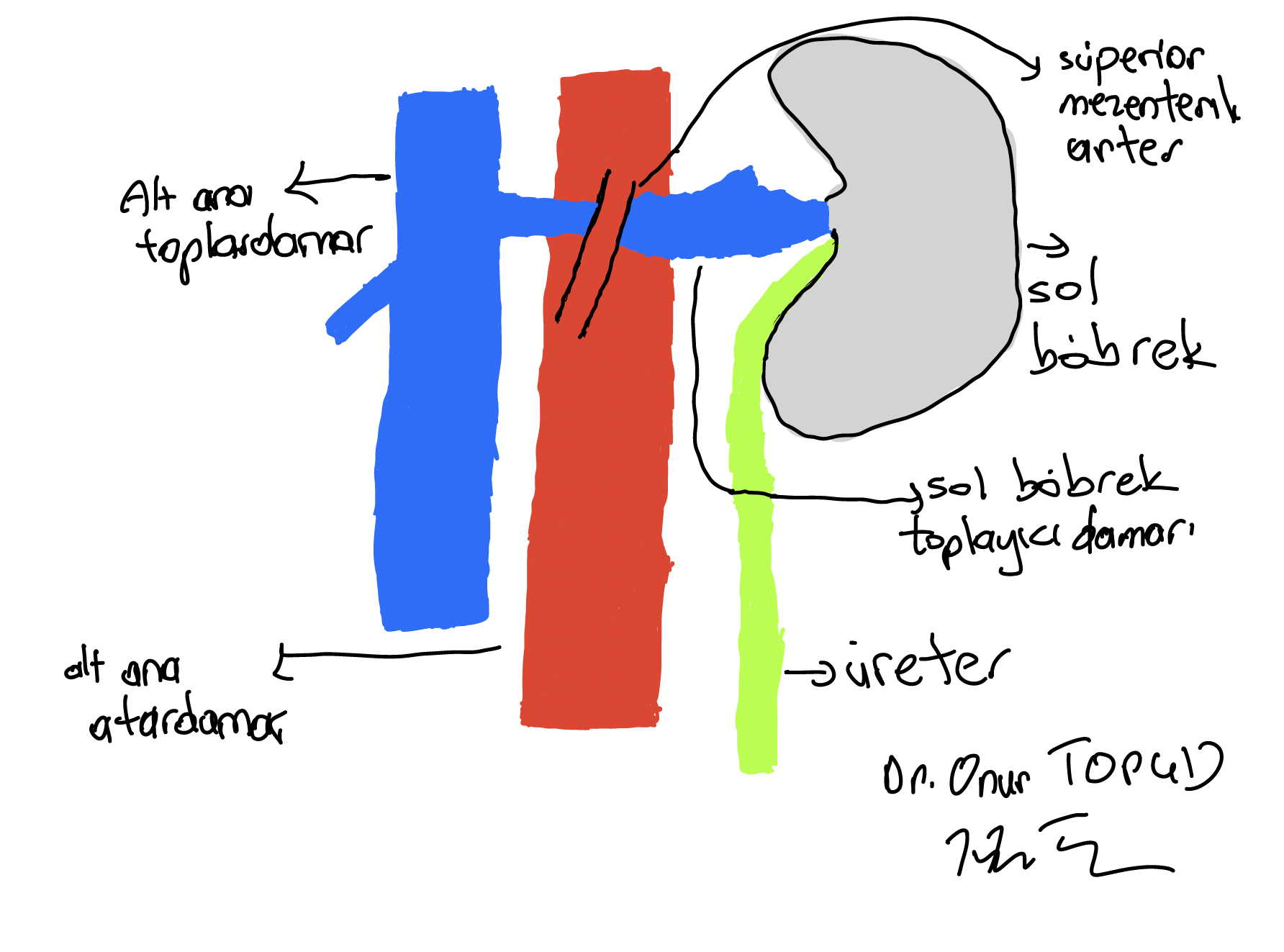
Prof. Dr. Onur Topçu
Gynecology and Obstetrics Specialist

Nutcracker syndrome occurs when the collecting vein of the left kidney is compressed and exposed to pressure by other structures within the body.
This may lead to obstruction of blood flow in the renal veins due to compression of the left renal vein, thus creating an obstruction in the venous drainage of the left kidney. This blockage in the renal veins can cause venous pressure to increase, which can lead to certain symptoms.
Symptoms of Nutcracker syndrome may include:
Hematuria (bloody urine): Blood may appear in the urine due to increased pressure in the renal veins.
Flank pain: Pain may be felt in the kidney area.
Proteinuria: Protein may be found in the urine.
Varicocele: Enlarged veins in the genital area (in men).
Menstrual pain, groin pain, pain during intercourse, pelvic congestion syndrome (in women).
Nutcracker syndrome is very difficult to diagnose. To make a diagnosis, it is necessary to first suspect this disease. Doppler ultrasonography, tomography, magnetic resonance imaging and angiography are used in diagnosis.
Medical and surgical treatments can be used in the treatment of Nutcracker syndrome.
Among the medical treatments, drugs used in venous insufficiency are used. Surgical treatments include different options, from placing a stent in the left renal vein to relocating the vein or surgical excision of the left ovary if complaints in the lower groin area are at the forefront.
Prof. Dr. H. Onur Topçu
Gynecology & Obstetrics-In Vitro Fertilization and Advanced Gynecological Endoscopy Specialist
PATIENT COMMENTS
Onur teacher was very supportive and encouraging at every stage of the process, from the very beginning to after the surgery. He informed us in the best and most accurate way by explaining all the details of the process completely and clearly. I would like to thank my teacher Onur very much and definitely recommend him to those who are looking for a doctor in this field.
Arz*** A***

